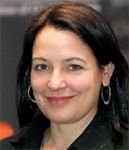Article
The Association for Research and Vision in Ophthalmology and the National Alliance for Eye and Vision Research work to keep Congress up to date
Most of the Association for Research in Vision and Ophthalmology's advocacy efforts in the United States take the form of educating members of Congress about the work its members do to help prevent and cure vision disorders and blindness.

Key Points

Most of our advocacy efforts in the United States take the form of educating members of Congress about the work our members do to help prevent and cure vision disorders and blindness. ARVO works through the National Alliance for Eye and Vision Research (NAEVR) to keep members up to date on major funding developments and organize informational briefings on Capitol Hill. NAEVR also arranges and accompanies ARVO members on visits to their representatives in the House and Senate.
Congress has demonstrated that it is hearing our message, repeatedly proposing bills that increase funding for the National Institutes of Health (NIH).
Following is a round-up of significant Congressional actions before the 110th Congress recessed in early August:
Science package enacted
A Supplemental Appropriations bill, passed overwhelmingly by the House (416-12) and Senate (92-6) was signed into law by President Bush in June and included a science package of $150 million in additional funding for NIH and $62.5 million for the National Science Foundation. The National Eye Institute's share of these supplemental funds is $3.5 million, which will go primarily to fund R01 grants, about eight additional, as well as some center grant and bridge award funding.
Emergency appropriations
In July, Sen. Arlen Specter introduced Senate bill 3272, which would make emergency supplemental appropriations of $5.2 billion for NIH. Of this, $4 billion would go to institutes and centers. Sen. Specter noted that these emergency appropriations were necessary to restore NIH's purchasing power, eroded by 13% over the past five funding cycles due to flat funding. It is unclear if it will be acted upon by the 110th Congress, but it makes a dramatic statement about the damage done to NIH's budget and hopefully makes the case for stronger funding in the future.
NIH funding increase proposed
Both the House and Senate Labor, Health and Human Services, and Education (LHHS) Appropriations Subcommittees reported spending bills that would increase NIH funding by $1 billion, which includes a $20 million increase for NEI. Both bills matched the biomedical inflation rate of 3.5%. Neither bill is likely to be acted upon until the 111th Congress convenes in early 2009.
To continue the promise of these developments, ARVO needs you. To learn more about how you can become an advocate for vision research funding, please contact NAEVR's executive director, James Jorkasky, at jamesj@visionresearch.org
.
Advocacy handbook
In the United States, ARVO's work with NAEVR has greatly expanded awareness of eye disease and vision impairment to increase vision research funding. Now, ARVO offers a new publication, ARVO International Advocacy Handbook: Tools to influence vision research funding to members and others worldwide. This publication presents dozens of ideas and suggestions for advocacy activities, along with accompanying examples that members can consider adapting to work with officials, policymakers, and funding organizations in their own countries.
The handbook is available as a PDF for download at http://www.arvo.org/advocacyhandbook.
Newsletter
Don’t miss out—get Ophthalmology Times updates on the latest clinical advancements and expert interviews, straight to your inbox.




